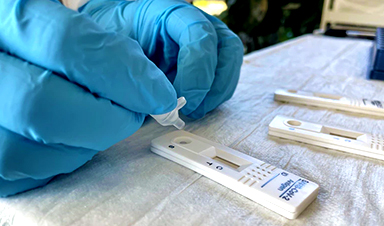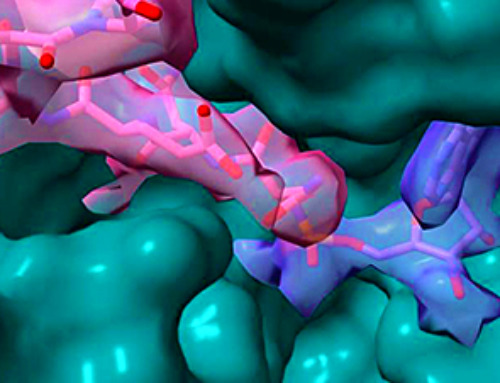The World Health Organization (WHO) and Centers for Disease Control and Prevention (CDC) are tracking and studying a highly mutated new variant of the virus that causes COVID-19. Officially titled BA.2.86 and nicknamed Pirola on social media, the WHO has designated it as a “variant under monitoring.” This status applies to variants that have an unusually large number of mutations that call for monitoring as they spread.
According to Fred Hutchinson Cancer Center evolutionary biologist Jesse Bloom, BA.2.86 has more than 30 amino acid changes in its spike protein, compared with its next closest ancestor (Omicron’s BA.2 subvariant).
“We have not seen a new variant [in humans] with this many new spike mutations happening all at once since the emergence of the original Omicron,” Bloom told NBC News. “Based on the sequence, I think we can be very confident this [variant] is going to be relatively good at evading the antibodies that most people have from prior infections and vaccinations. What we still don’t know is, is this variant good enough at transmitting that it will really be able to spread widely around the world?”
So far, only six sequences BA.2.86 have been reported in the United States, United Kingdom, Israel, and Denmark, but epidemiologists are concerned that it is circulating in more places since monitoring COVID-19 variants has dropped.
“It is unusual for corona to change so significantly and develop 30 new mutations. The last time we saw such a big change was when Omicron appeared,” Morten Rasmussen, a senior researcher at the Statens Serum Institut (SSI) in Denmark, said in a statement.
SSI scientists stressed that it is currently too early to say if this new variant is more contagious or severe and that they are in the process testing it against human antibodies.
The CDC will keep monitoring BA.2.86, but did not say it is not currently a cause for alarm. According to the CDC’s variant tracker, the XBB descendant EG.5 (nicknamed Eris) is causing roughly 20 percent of all new COVID-19 cases in the US and is the dominant variant. The next most common variant is FL.1.5.1, causing about 13 percent new cases.
[Related: Your guide to COVID testing for the unforeseeable future.]
“I think what we are seeing is our detection mechanisms that we’ve put in place are working, right?” CDC Director Mandy Cohen told CNN. “We are more prepared than ever to detect and respond to changes in the COVID-19 virus.”
As the fall and winter virus season approaches, COVID-19 cases are expected to continue to climb around the US. The Food and Drug Administration (FDA) is expected to authorize updated booster shots soon, with signoff from the CDC expected by mid-September. The new boosters won’t include the specific EG.5 subvariant or BA.2.86, but will target the XBB strains.
News
Team finds flawed data in recent study relevant to coronavirus antiviral development
The COVID pandemic illustrated how urgently we need antiviral medications capable of treating coronavirus infections. To aid this effort, researchers quickly homed in on part of SARS-CoV-2's molecular structure known as the NiRAN domain—an [...]
Drug-Coated Neural Implants Reduce Immune Rejection
Summary: A new study shows that coating neural prosthetic implants with the anti-inflammatory drug dexamethasone helps reduce the body’s immune response and scar tissue formation. This strategy enhances the long-term performance and stability of electrodes [...]
Scientists discover cancer-fighting bacteria that ‘soak up’ forever chemicals in the body
A family of healthy bacteria may help 'soak up' toxic forever chemicals in the body, warding off their cancerous effects. Forever chemicals, also known as PFAS (per- and polyfluoroalkyl substances), are toxic chemicals that [...]
Johns Hopkins Researchers Uncover a New Way To Kill Cancer Cells
A new study reveals that blocking ribosomal RNA production rewires cancer cell behavior and could help treat genetically unstable tumors. Researchers at the Johns Hopkins Kimmel Cancer Center and the Department of Radiation Oncology and Molecular [...]
AI matches doctors in mapping lung tumors for radiation therapy
In radiation therapy, precision can save lives. Oncologists must carefully map the size and location of a tumor before delivering high-dose radiation to destroy cancer cells while sparing healthy tissue. But this process, called [...]
Scientists Finally “See” Key Protein That Controls Inflammation
Researchers used advanced microscopy to uncover important protein structures. For the first time, two important protein structures in the human body are being visualized, thanks in part to cutting-edge technology at the University of [...]
AI tool detects 9 types of dementia from a single brain scan
Mayo Clinic researchers have developed a new artificial intelligence (AI) tool that helps clinicians identify brain activity patterns linked to nine types of dementia, including Alzheimer's disease, using a single, widely available scan—a transformative [...]
Is plastic packaging putting more than just food on your plate?
New research reveals that common food packaging and utensils can shed microscopic plastics into our food, prompting urgent calls for stricter testing and updated regulations to protect public health. Beyond microplastics: The analysis intentionally [...]
Aging Spreads Through the Bloodstream
Summary: New research reveals that aging isn’t just a local cellular process—it can spread throughout the body via the bloodstream. A redox-sensitive protein called ReHMGB1, secreted by senescent cells, was found to trigger aging features [...]
AI and nanomedicine find rare biomarkers for prostrate cancer and atherosclerosis
Imagine a stadium packed with 75,000 fans, all wearing green and white jerseys—except one person in a solid green shirt. Finding that person would be tough. That's how hard it is for scientists to [...]
Are Pesticides Breeding the Next Pandemic? Experts Warn of Fungal Superbugs
Fungicides used in agriculture have been linked to an increase in resistance to antifungal drugs in both humans and animals. Fungal infections are on the rise, and two UC Davis infectious disease experts, Dr. George Thompson [...]
Scientists Crack the 500-Million-Year-Old Code That Controls Your Immune System
A collaborative team from Penn Medicine and Penn Engineering has uncovered the mathematical principles behind a 500-million-year-old protein network that determines whether foreign materials are recognized as friend or foe. How does your body [...]
Team discovers how tiny parts of cells stay organized, new insights for blocking cancer growth
A team of international researchers led by scientists at City of Hope provides the most thorough account yet of an elusive target for cancer treatment. Published in Science Advances, the study suggests a complex signaling [...]
Nanomaterials in Ophthalmology: A Review
Eye diseases are becoming more common. In 2020, over 250 million people had mild vision problems, and 295 million experienced moderate to severe ocular conditions. In response, researchers are turning to nanotechnology and nanomaterials—tools that are transforming [...]
Natural Plant Extract Removes up to 90% of Microplastics From Water
Researchers found that natural polymers derived from okra and fenugreek are highly effective at removing microplastics from water. The same sticky substances that make okra slimy and give fenugreek its gel-like texture could help [...]
Instant coffee may damage your eyes, genetic study finds
A new genetic study shows that just one extra cup of instant coffee a day could significantly increase your risk of developing dry AMD, shedding fresh light on how our daily beverage choices may [...]





















